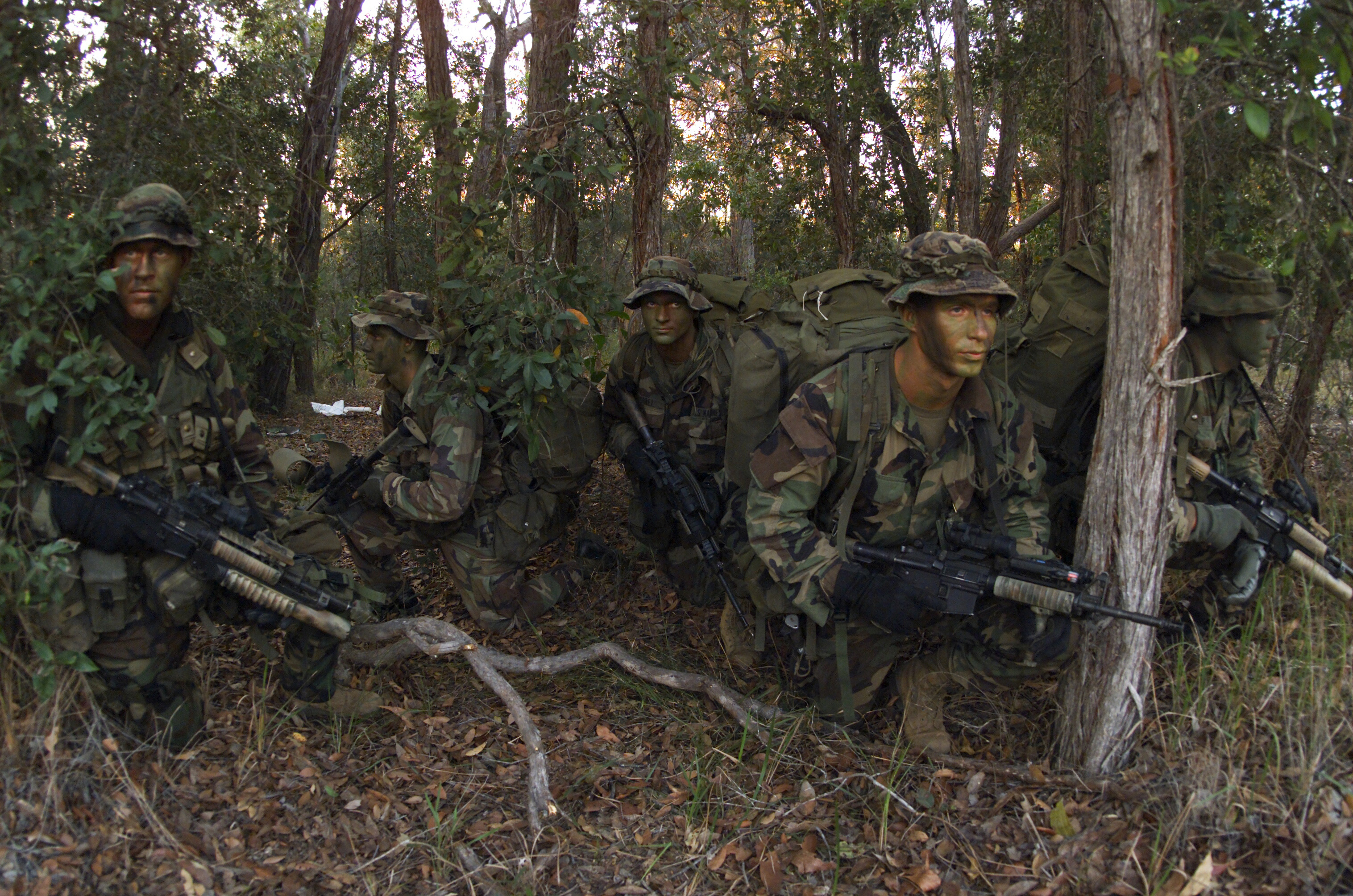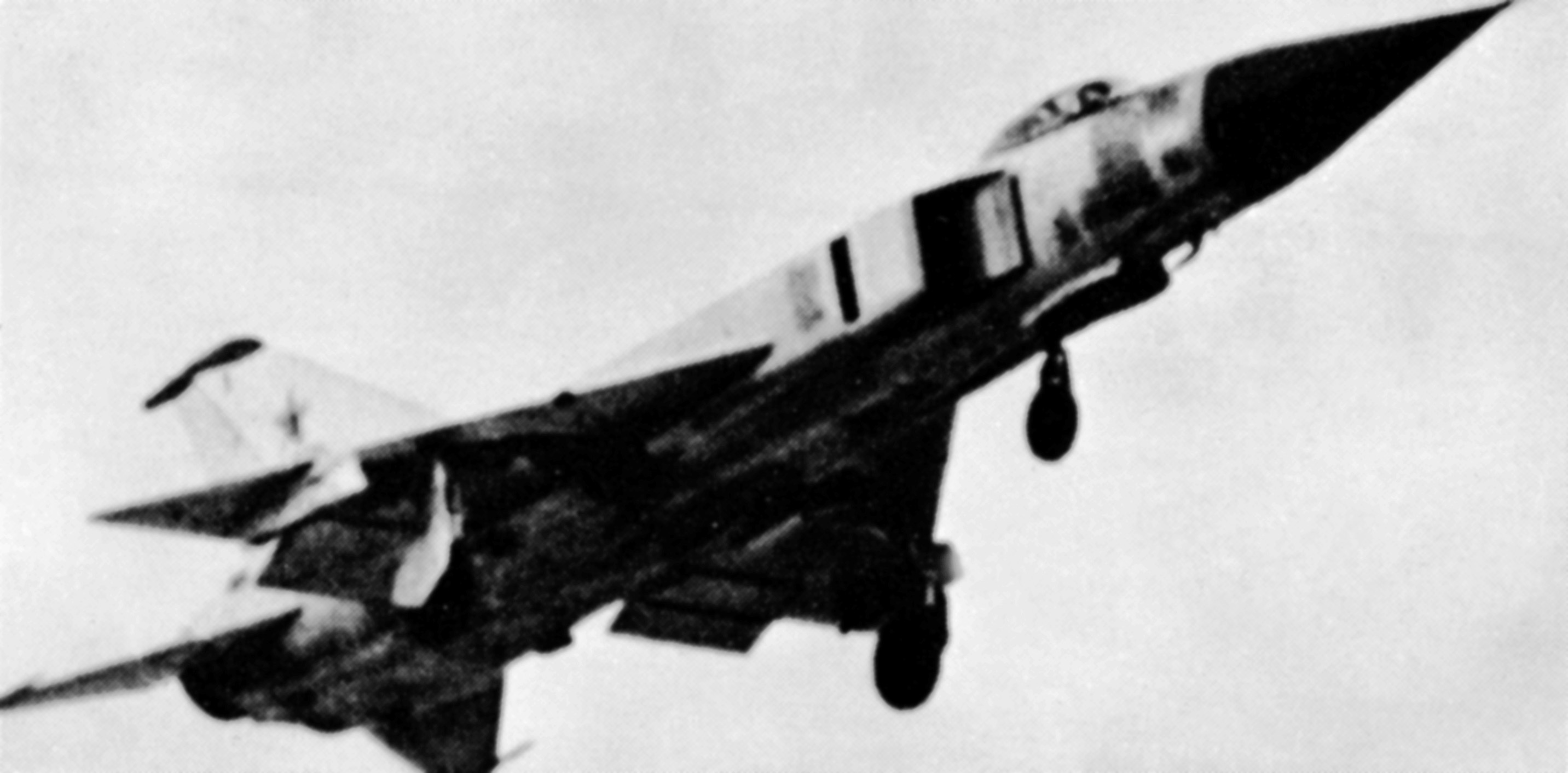|
Sukhoi Su-9
The Sukhoi Su-9 (Air Standardization Coordinating Committee, ASCC reporting name: Fishpot) is a single-engine, all-weather, missile-armed interceptor aircraft developed by the Soviet Union. Development The Su-9 emerged from aerodynamic studies by TsAGI, the Soviet aerodynamic center, during the Korean War, which devised several optimum aerodynamic configurations for jet fighters. The design first flew in 1956 in aviation, 1956 as the T-405 prototype. The Su-9 was developed at the same time as the Sukhoi Su-7, Su-7 "Fitter", and the West first saw both at the Tushino Aviation Day on June 24, 1956, where the Su-9 was dubbed Fitter-B. It entered service in 1959 in aviation, 1959. The total production of the Su-9 was about 1,100 aircraft. It is believed that at least some Su-9s were upgraded to Sukhoi Su-11, Su-11 "Fishpot-C" form. None were exported to any of the Soviet Union, USSR's client states nor to the Warsaw Pact nations. The remaining Su-9s and later Su-11s were retired d ... [...More Info...] [...Related Items...] OR: [Wikipedia] [Google] [Baidu] |
WikiProject Aircraft
A WikiProject, or Wikiproject, is an affinity group for contributors with shared goals within the Wikimedia movement. WikiProjects are prevalent within the largest wiki, Wikipedia, and exist to varying degrees within Wikimedia project, sibling projects such as Wiktionary, Wikiquote, Wikidata, and Wikisource. They also exist in different languages, and translation of articles is a form of their collaboration. During the COVID-19 pandemic, CBS News noted the role of Wikipedia's WikiProject Medicine in maintaining the accuracy of articles related to the disease. Another WikiProject that has drawn attention is WikiProject Women Scientists, which was profiled by ''Smithsonian Magazine, Smithsonian'' for its efforts to improve coverage of women scientists which the profile noted had "helped increase the number of female scientists on Wikipedia from around 1,600 to over 5,000". On Wikipedia Some Wikipedia WikiProjects are substantial enough to engage in cooperative activities with outsi ... [...More Info...] [...Related Items...] OR: [Wikipedia] [Google] [Baidu] |
Sukhoi Su-7
The Sukhoi Su-7 ( NATO designation name: Fitter-A) is a swept wing, supersonic fighter aircraft developed by the Soviet Union in 1955. Originally, it was designed as a tactical, low-level dogfighter, but was not successful in this role. On the other hand, the soon-introduced Su-7B series became the main Soviet fighter-bomber and ground-attack aircraft of the 1960s. The Su-7 was rugged in its simplicity, but its Lyulka AL-7 engine had such high fuel consumption that it seriously limited the aircraft's payload, as even short-range missions required that at least two hardpoints be used to carry drop tanks rather than ordnance. Design and development After Joseph Stalin's death, the Sukhoi OKB was reopened"Sukhoi Su-7." ''Sukhoi Company Museum.'' Retrieved: 28 January 2011 and by the summer, it began work on a swept-wing front-li ... [...More Info...] [...Related Items...] OR: [Wikipedia] [Google] [Baidu] |
Zoom Climb
A zoom climb or an unrestricted climb is a maneuver in which the rate of climb is greater than the maximum climb rate using only the thrust of the aircraft's engines. The additional climb rate is attained by reduction of horizontal speed. Before a zoom climb, the aircraft accelerates to a high airspeed at an altitude at which it can operate in sustained level flight. The pilot then pulls steeply upward, trading the kinetic energy of forward motion for altitude (potential energy). This is different from a steady climb, where the increase in potential energy comes from mechanical work done by the engines. Zoom climbs are somewhat commonly performed by modern fighter aircraft and are typically referred to as "unrestricted climbs" in this context. Pilots will take off, accelerate to high speed at low altitude, and then pull the aircraft vertical or nearly vertical to quickly climb to the aircraft's cruising altitude. Some aircraft such as the Lockheed Martin F-22 Raptor can use thr ... [...More Info...] [...Related Items...] OR: [Wikipedia] [Google] [Baidu] |
World Record
A world record is usually the best global and most important performance that is ever recorded and officially verified in a specific skill, sport, or other kind of activity. The book ''Guinness World Records'' and other world records organizations collates and publishes notable records of many. Terminology In the United States, the form World's Record was formerly more common. The term The World's Best was also briefly in use. The latter term is still used in athletics (sport), athletics events, including track and field and road running to describe good and bad performances that are not recognized as an official world record: either because it is not an event where World Athletics tracks the record (e.g. the 150 m run or individual events in a decathlon), or because it does not fulfill other rigorous criteria of an otherwise qualifying event (e.g. the Great North Run half-marathon, which has an excessive downhill gradient). The term is also used in video game speedrunning for ... [...More Info...] [...Related Items...] OR: [Wikipedia] [Google] [Baidu] |
Vladimir Sergeievitch Ilyushin
Vladimir Sergeyevich Ilyushin (; 31 March 1927 – 1 March 2010) was a Russian military officer and a test pilot in the former Soviet space program. Ilyushin was a son of the famous aviation designer Sergey Ilyushin, and whose career was mostly as a test pilot for the Sukhoi OKB (a rival of Ilyushin OKB). After retiring from the space program, Ilyushin became a sports administrator and was inducted into the World Rugby Hall of Fame (then known as the IRB Hall of Fame) in 2013. In 1961, Ilyushin was the subject of a conspiracy theory that he, rather than Yuri Gagarin, was the first cosmonaut in space. There is no evidence and no support for the theory. Career as test pilot Ilyushin was a test pilot and lieutenant general in the Soviet Air Forces. He piloted the maiden flights of the Sukhoi's Su-11 (1958), Т-5 (1958), Su-15 (1962), Su-17 (1966), Su-24 (1967), Т-4 (1972), Su-25 (1975) and the Su-27 (1977). Ilyushin demonstrated his outstanding piloting skills as a tes ... [...More Info...] [...Related Items...] OR: [Wikipedia] [Google] [Baidu] |
SA-2
The S-75 (Russian: С-75; NATO reporting name SA-2 Guideline) is a Soviet-designed, high-altitude air defence system. It is built around a surface-to-air missile with command guidance. Following its first deployment in 1957 it became one of the most widely deployed air defence systems in history. It scored the first destruction of an enemy aircraft by a surface-to-air missile, with the shooting down of a Taiwanese Martin RB-57D Canberra over China on 7 October 1959 that was hit by a salvo of three V-750 (1D) missiles at an altitude of . This success was credited to Chinese fighter aircraft at the time to keep the S-75 program secret.: "On October 7, 1959, one of the Taiwanese RB-57Ds was struck at an altitude of 65,600ft (20km) by a salvo of three V-750 missiles" This system first gained international fame when an S-75 battery, using the newer, longer-range, higher-altitude V-750VN (13D) missile was deployed in the 1960 U-2 incident, when it shot down the Lockheed U-2, U-2 of F ... [...More Info...] [...Related Items...] OR: [Wikipedia] [Google] [Baidu] |
Lockheed U-2
The Lockheed U-2, nicknamed the "''Dragon Lady''", is an American single-engine, high–altitude reconnaissance aircraft operated by the United States Air Force (USAF) and the Central Intelligence Agency (CIA) since the 1950s. Designed for all-weather, day-and-night intelligence gathering at altitudes above ), the U-2 has played a pivotal role in aerial surveillance for decades. Lockheed Corporation originally proposed the aircraft in 1953. It was approved in 1954, and its first test flight was in 1955. It was flown during the Cold War over the Soviet Union, China, Vietnam War, Vietnam, and Cuba. In 1960, Francis Gary Powers, Gary Powers was 1960 U-2 incident, shot down in a CIA U-2C over the Soviet Union by a surface-to-air missile (SAM). Major Rudolf Anderson, Rudolf Anderson Jr. was shot down in a U-2 during the Cuban Missile Crisis in 1962. U-2s have taken part in post-Cold War conflicts in War in Afghanistan (2001–2021), Afghanistan and Operation Iraqi Freedom, Iraq, and ... [...More Info...] [...Related Items...] OR: [Wikipedia] [Google] [Baidu] |
Francis Gary Powers
Francis Gary Powers (August 17, 1929August 1, 1977) was an American pilot who served as a United States Air Force officer and a CIA employee. Powers is best known for his involvement in the 1960 U-2 incident, when he was shot down while flying a secret CIA spying mission over the Soviet Union. Powers survived, but was captured and sentenced to 10 years in a Soviet prison for espionage. He served 21 months of his sentence before being released in a prisoner swap in 1962. After returning to the US, he worked at Lockheed as a test pilot for the U-2, and later as a helicopter pilot for Los Angeles news station KNBC. He died in 1977, when the KNBC helicopter he was flying crashed. Early life and education Powers was born August 17, 1929, in Jenkins, Kentucky, the son of Oliver, a coal miner, and his wife Ida. Powers was the only boy among the family's six children. Oliver, who often struggled to make ends meet, wanted his son to be a physician. When Powers was fourteen, he ... [...More Info...] [...Related Items...] OR: [Wikipedia] [Google] [Baidu] |
Reconnaissance
In military operations, military reconnaissance () or scouting is the exploration of an area by military forces to obtain information about enemy forces, the terrain, and civil activities in the area of operations. In military jargon, reconnaissance is abbreviated to ''recce'' (in British, Canadian, Australian English) and to ''recon'' (in American English), both derived from the root word ''reconnoitre'' / ''reconnoitering''. The types of reconnaissance include patrolling the local area of operations and long-range reconnaissance patrols, which are tasks usually realized in the United States of America by U.S. Army Rangers, cavalry scouts, and military intelligence specialists, using navy ships and submarines, Aerial reconnaissance, reconnaissance aircraft, satellites to collect raw intelligence; and establishing observation posts. Moreover, espionage is different from reconnaissance, because spies work as civilians in enemy territory. Etymology The word is derived from the ... [...More Info...] [...Related Items...] OR: [Wikipedia] [Google] [Baidu] |
Mikoyan-Gurevich MiG-25
The Mikoyan-Gurevich MiG-25 (; NATO reporting name: Foxbat) is a Supersonic aircraft, supersonic Interceptor aircraft, interceptor and reconnaissance aircraft that is among the Flight airspeed record, fastest military aircraft to enter service. Designed by the Soviet Union's Mikoyan, Mikoyan-Gurevich bureau, it is an aircraft built primarily using stainless steel. It was to be the last aircraft designed by Mikhail Gurevich (aircraft designer), Mikhail Gurevich, before his retirement. The first prototype flew in 1964 and the aircraft entered service in 1970. Although it was capable of reaching Mach 3.2+, this would result in the engines accelerating out of control and needing replacement, therefore the operational top speed was limited to Mach number, Mach 2.83."Intellige ... [...More Info...] [...Related Items...] OR: [Wikipedia] [Google] [Baidu] |
Sukhoi Su-15
The Sukhoi Su-15 (NATO reporting name: Flagon) is a twinjet supersonic interceptor aircraft developed by the Soviet Union. It entered service in 1965 and remained one of the front-line designs into the 1990s. The Su-15 was designed to replace the Sukhoi Su-11 and Sukhoi Su-9, which were becoming obsolete as NATO introduced newer and more capable strategic bombers. Development Recognizing the limitations of the earlier Su-9 and Su-11 in intercepting the new Boeing B-52 Stratofortress, particularly in terms of radar and aircraft performance, the Sukhoi OKB quickly began the development of a heavily revised and more capable aircraft. A variety of development aircraft evolved, including the Sukhoi T-49, which shared the fuselage of the Su-9 (including its single engine), but used cheek-mounted intakes to leave the nose clear for a large radome for the RP-22 Oryol-D ("Eagle") radar (NATO "Skip Spin"), and the T-5, essentially a heavily modified Su-11 with a widened rear fuselage ... [...More Info...] [...Related Items...] OR: [Wikipedia] [Google] [Baidu] |





